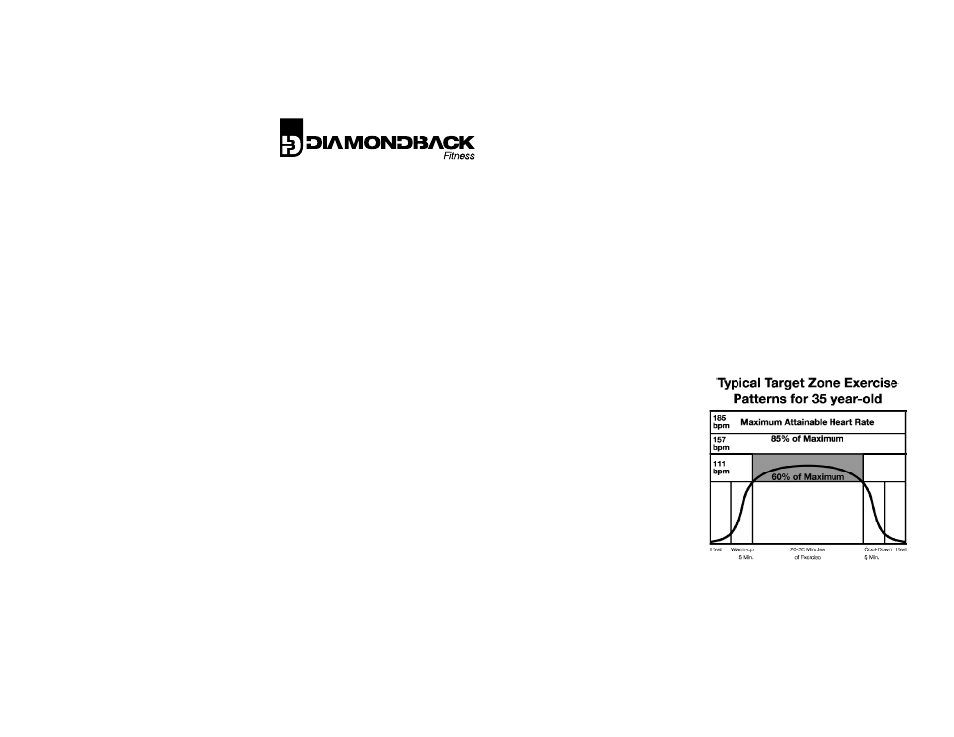Diamondback Fitness 900Er User Manual
Page 18

18
In general, a wireless heart rate chest strap is the more accurate and convenient method of detecting and monitoring a heart
rate signal. The user is not required to grip the touch heart rate sensors and the unit will continuously display the detected heart
rate no matter where the hands are placed.
Your Estimated Maximum Heart Rate & Target Training Zone
Your calculated target heart rate, or the ideal intensity needed to improve cardiovascular fitness, depends primarily upon your
age rather than your current state of fitness. If the exercise intensity is too low or too high, only modest gains will be made in
strength and cardiovascular fitness. A workout at a very low intensity will not offer maximum benefits. Conversely, if the
workout intensity is too high, injury or fatigue may slow the progression of your exercise goals as the body attempts to recover.
It is most effective to train at a heart rate between 60% and 85% of your maximum heart rate. Maximum heart rate is calculated
as 220 beats‐per‐minute minus your age.
To calculate your maximum heart rate and find the appropriate target training zone, use the following formulas. For example,
the following estimation would be relevant for a 35 year‐old user:
220 – 35 = 185 Bpm
(220 – Age = Max Heart Rate in Beats‐per‐
minute/Bpm)
0.60 x 185 = 111 Bpm (60% of 185 BPM [Maximum Heart Rate] = 111 Bpm,
the upper threshold of the targeted heart rate
training zone)
0.85 x 185 = 157 Bpm (85% of 185 BPM [Maximum Heart Rate] = 157 Bpm,
the upper threshold of the targeted heart rate
training zone)
Based on these calculations, the recommended heart rate training zone for this
user would be between 111 Bpm – 157 Bpm. Pictured to the right is a graph
which displays the recommended heart rate training zone for users twenty years
of age to seventy‐five years of age.